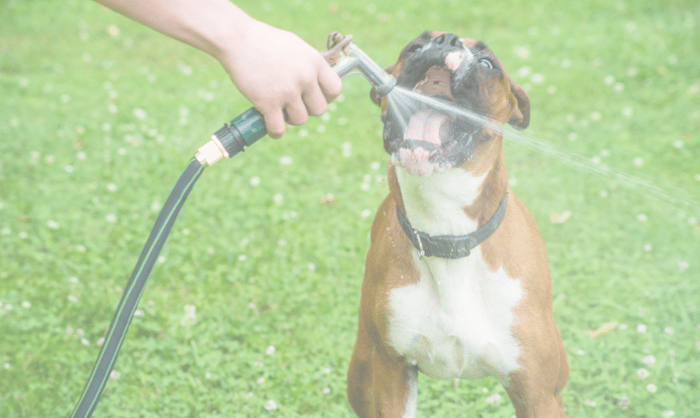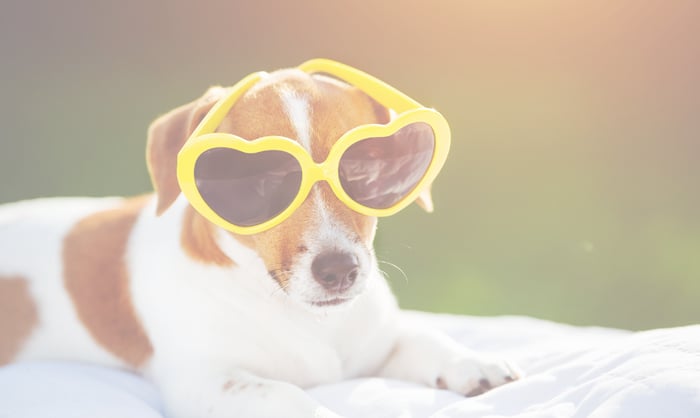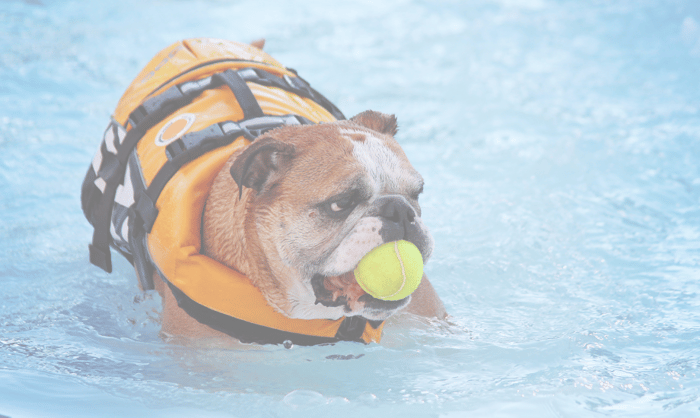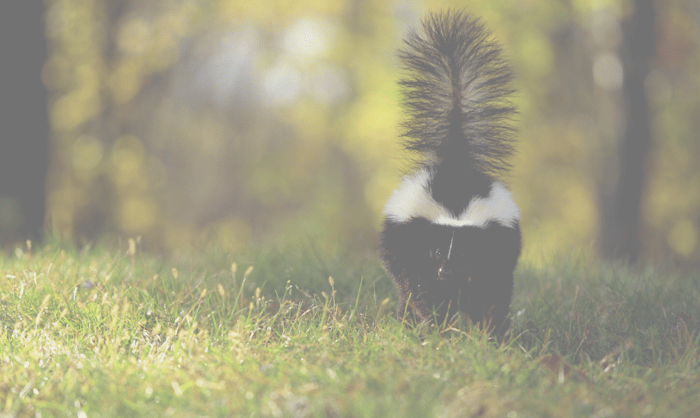Here at healthybud, we’re obviously passionate about providing dogs with healthy, nutritious food full of great ingredients. But *Dog Hydration Tips* is really the main focus, and what your dog drinks plays a huge part in that.
Getting enough water is essential for your dog’s body systems like digestion and circulation, and helps them stay cool during the summer months. You might actually be surprised by how many dog hydration tips there are to know about making the right choices for keeping your dog hydrated.
Read on to learn dog hydration tips what kind of water you should give your dog, how much is enough (or too much), and how to know your pet is properly hydrated.
🐶 What is the healthiest water for dogs?
Unfiltered tap water isn’t necessarily a safe water source for your dog. Some tap water supplies contain toxins or contaminants. Also, depending on where you live, the mineral content of your tap water could be quite high.
The best choice is to give your dog filtered water. You can use a jug or a pet fountain with a filter, or purchase a filter for your tap. If your pet is reluctant to drink up, try to entice him by adding a canine-safe broth to the bowl – or as a hack, crumble in any of our Booster products!
Also, make sure you keep your dog’s water supply fresh and clean. Replace it often, especially if food falls in it, and clean his bowl daily.
Finally, keep the toilet lid closed! Many dogs will happily lap up the water from your toilet if they get the chance, but this isn’t a healthy or clean water source (for obvious reasons).
❓ How much water does my dog need every day?
The amount of water your dog needs on an average day varies based on their size, age, activity level, and the weather. For most dogs, a range of 0.25 to 0.5 litres per 4.5 kilograms of weight, per day is normal.

Pay extra attention to your dog’s water intake during hot weather, on days when they’re especially active, if she’s lactating, or if they’re ill. Note: Dogs regulate their body temperature by panting – and they lose water through respiration if they’re panting a lot on a hot day!
❗ Can my dog drink too much water?
It’s unusual, but is possible, for your dog to drink too much water – and just as in humans, this can be toxic. Your pet could take in more water than you realize if they’re swimming or playing at the beach, or drinking from a hose in the yard.
Symptoms of water toxicity include:
- Loss of coordination
- Lethargy (extreme tiredness)
- Nausea or vomiting
- Excessive salivation
If you’re concerned about your dog drinking too much water because you’re suddenly filling his bowl a lot more often than usual, it’s worth making a call to your vet. Excessive water consumption is a symptom of several medical conditions, including diabetes and kidney disease.
🚰 How can I tell if my dog is thirsty?
Of course, it’s also possible for your dog to get too little water! Here are some of the signs of a need for water, or even dehydration, to watch for in your bud:
- Gums are sticky or dry
- Eyes and nose are dry
- Skin doesn’t pop back into place when pinched
- Urine is dark and/or has a strong smell
- Lacks energy
🏥 What do I do if my dog is dehydrated?
Mild cases of dehydration can usually be treated at home by a pet parent. Continue to offer your dog fresh, cool water. If they’re reluctant, offer small amounts at a time and give them a treat when they drink.

But if your dog is showing serious signs of dehydration, get emergency veterinary help. You should also visit the vet if your dog is dehydrated because of an illness or if it’s not clear why they’re dehydrated – for example, if the dehydration is caused by vomiting or diarrhea.
💡 #DYK?
Just like yours, your dog’s body is just under 80% water. It’s up to us to keep them hydrated and provide dog hydration tips!
Stay healthy, stay happy, stay curious #healthygang!
Lots of love,
- The healthybud team






